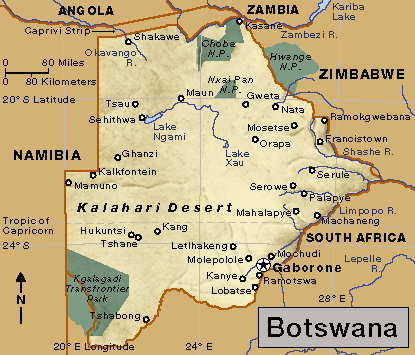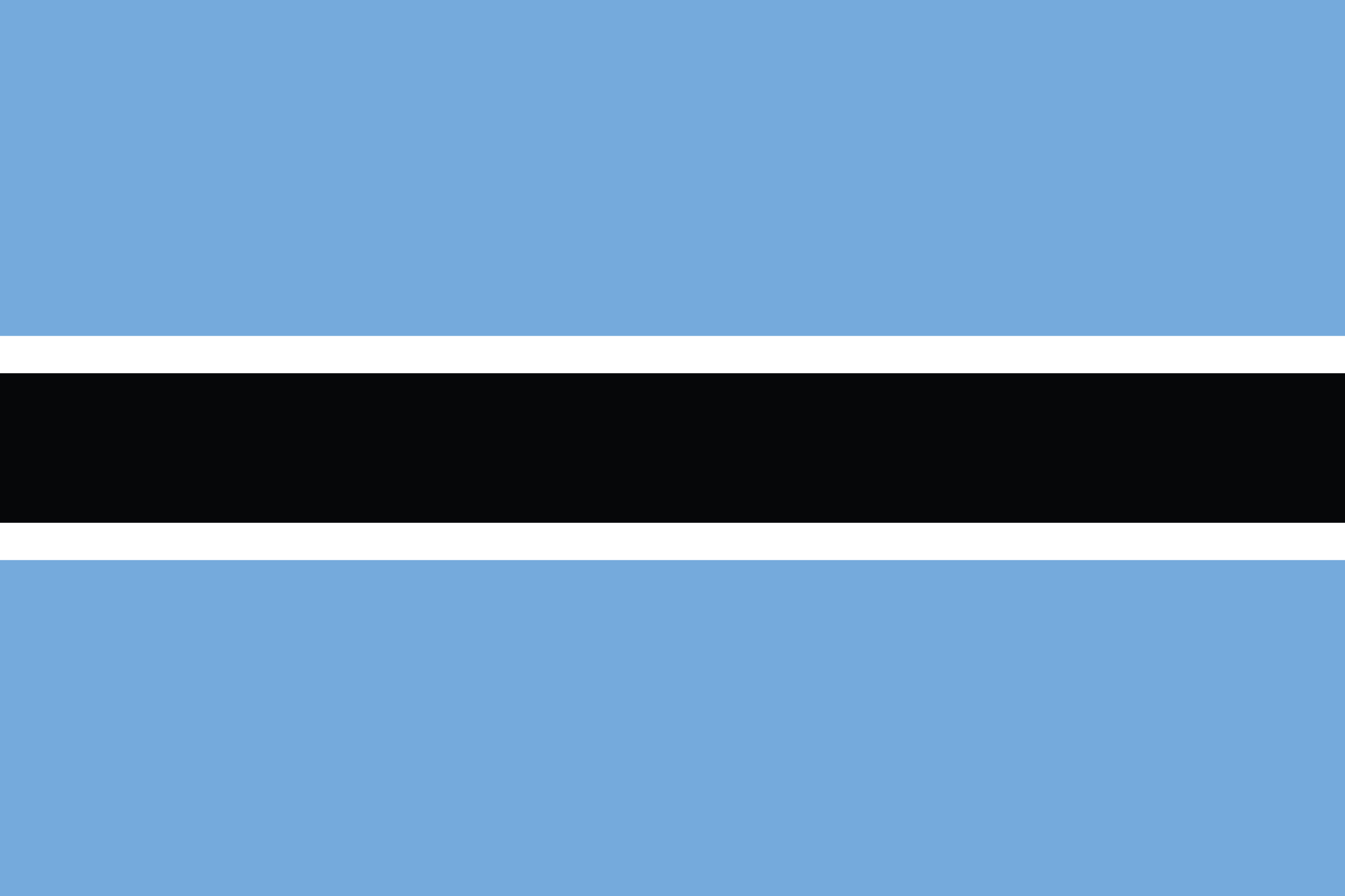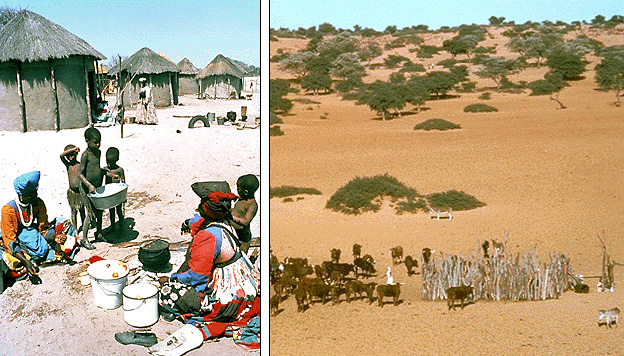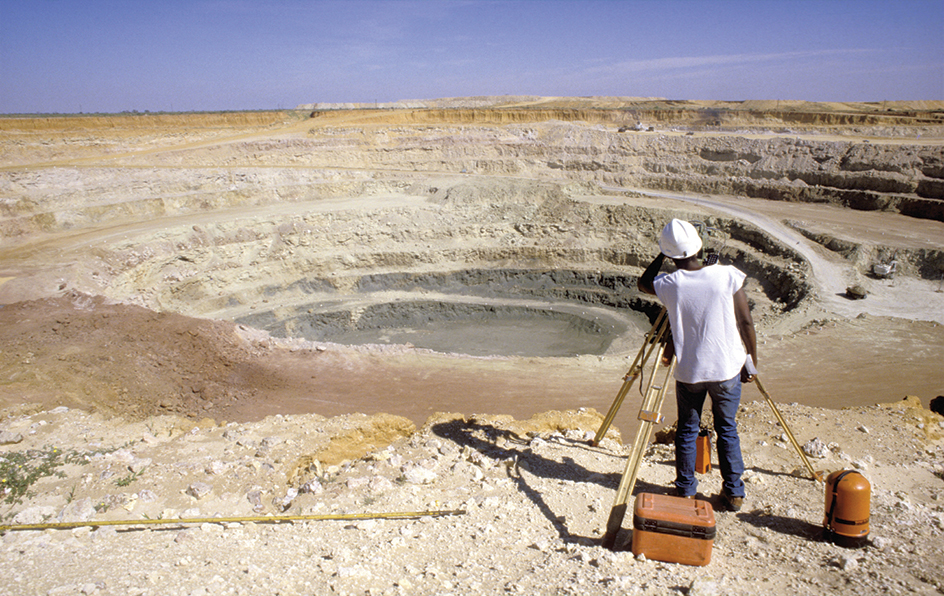Botswana << boh TSWAH nah >> is a country in the center of southern Africa. Its official name is the Republic of Botswana. Botswana has a democratic form of government. It was one of the few African nations with more than one political party in the 1970’s and 1980’s. A number of other nations then began adopting multiparty systems. Botswana is a member of the Commonwealth, an association of former British colonies.

Botswana lies far from the sea and is surrounded by land. It is one of the most thinly populated countries in Africa. Botswana covers 224,607 square miles (581,730 square kilometers), but it has a population of only about 2,400,000 people. Most of the people live in eastern Botswana. The Kalahari Desert covers much of the rest of Botswana. Gaborone is the capital and largest city.
Government.
Botswana is a republic headed by a president. The National Assembly, the country’s chief legislative body, elects the president to a five-year term. The people elect most members of the Assembly, though a few are elected by the Assembly itself from a list of candidates proposed by the president. Assembly elections must be held at least once every five years. Citizens who are at least 18 years old may vote. The president selects a cabinet from the National Assembly. The House of Chiefs, made up of the leaders of the nation’s major ethnic groups, advises the government on matters that affect ethnic customs.
The Botswana Democratic Party is the most powerful political party. The Umbrella for Democratic Change, a coalition, is the main opposition group.

People.
City dwellers make up about 70 percent of Botswana’s population. Most of the country’s rural people live in large villages and make their living by farming or raising livestock. There are two major ethnic groups in Botswana, the Tswana and the Kalanga. The Tswana make up about 80 percent of the population, and the Kalanga form about 10 percent. Many Africans from South Africa, Zambia, and Zimbabwe also live and work in Botswana.

Tens of thousands of San (also called Bushmen or Basarwa) live in Botswana. Only a few of them still live by hunting and gathering food. The rest live in permanent settlements or work on cattle farms. See San .
Botswana’s population also includes a large number of expatriates—a word used in Botswana to refer to residents who are not black Africans. The expatriates include Europeans, white South Africans, and Asians. Some of the whites own ranches. Other expatriates hold technical or managerial jobs in the nation’s mining industry or in business or government. In general, the expatriates earn higher incomes and enjoy better standards of living than do the ethnic groups native to Botswana. This situation causes some resentment. But the government declares it has a nonracist policy. It argues that the skills and capital of expatriates are needed to help the economy grow.
English is Botswana’s official language, but most of the people speak Tswana, a Bantu language that Africans call Setswana (see Bantu ). About 75 percent of the people are Christians. Most of the rest of the people practice traditional African religions. Almost all of Botswana’s children attend elementary school, and about half go on to high school. The University of Botswana is in Gaborone. Botswana also has several teacher-training colleges.
Unemployment is a major problem in Botswana. Tens of thousands of Botswana citizens, most of them young men, work in neighboring African countries, mainly South Africa. This arrangement brings much-needed foreign currency into Botswana, but it separates families and creates other social problems.
Poor housing is also a problem in Botswana, especially in such mining towns as Orapa and Selebi-Pikwe, where the poor live in overcrowded villages. The government is seeking ways to reduce unemployment and improve housing.
Land and climate.
Botswana lies on a huge plateau and has an average altitude of about 3,300 feet (1,010 meters) above sea level. The land is hilly in the east and flat or gently rolling elsewhere. Eastern Botswana has the most fertile land, and about 80 percent of the people live there. Forests cover parts of the north. The Kalahari Desert occupies almost all the central and southwest areas of the country. Bushes and grass grow in most of the Kalahari, but the southwest has sand dunes and little plant life.
The Okavango River rises in Angola and flows into northwestern Botswana. There, the river divides into streams and forms the Okavango Swamps, a vast marshland.
Botswana has a dry, subtropical climate. In summer, which lasts from October to April, daytime temperatures often reach 100 °F (38 °C). Winter days are warm, but the temperature often falls below freezing at night. Average annual rainfall ranges from 22 inches (56 centimeters) in the east to 12 inches (30 centimeters) in the west. Droughts occur frequently.
Economy.
Botswana has a stronger economy than most African nations. Since the late 1960’s, the country’s economy has developed rapidly. Diamond mining is Botswana’s leading industry, and Botswana is one of the world’s largest diamond producers. The Jwaneng diamond mine in the south-central part of the country is one of the world’s richest diamond mines. Botswana also mines coal, copper, gold, salt, and soda ash.
More than a fourth of all Botswana’s workers are farmers. Cattle, which are raised for both beef and milk, are the leading agricultural product. Farmers also raise chickens, goats, and sheep. Botswana’s leading crops include corn, sorghum, and vegetables.
Tourism is important to Botswana’s economy. Many tourists visit Botswana to see the country’s wildlife. Manufacturing plays a small role in Botswana’s economy. Processed foods and textiles are among the leading manufactured products.
Botswana’s chief exports include beef, diamonds and other mineral products, and electrical equipment. Leading imports include chemicals, food, machinery, petroleum, and transportation equipment. Botswana’s chief trading partners include Belgium, China, India, and South Africa.

Paved roads connect Botswana’s major cities. Botswana’s railroads connect the country to South Africa and Zimbabwe. Gaborone has an international airport.
History.
In prehistoric times, the San lived in what became Botswana. Sometime between A.D. 1 and A.D. 1000, the Tswana came to the area from the north. They settled in the fertile eastern lands and pushed the San into the Kalahari region.
During the 1800’s, the Tswana fought with rival black African groups and with white settlers from what is now South Africa. The Tswana sought European support against their enemies. In the late 1800’s, Britain brought the area that is now Botswana under its protection. In 1895, this area became known as the Bechuanaland Protectorate. Britain governed the area until the 1960’s. The South African government asked Britain several times to transfer the protectorate to South Africa, but the British refused to do so.
The Bechuanaland Protectorate gained independence as the Republic of Botswana on Sept. 30, 1966. Seretse Khama became the nation’s first president.
From the late 1960’s through the mid-1990’s, Botswana’s economy grew rapidly. South Africa has provided the country with technology and other assistance. In addition, Botswana has sought closer ties with such countries as Angola, Mozambique, Tanzania, and Zambia. An all-weather road from southern Botswana to Zambia was completed in 1977. During the 1990’s, AIDS became a major problem in Botswana. By the early 2000’s, more than 20 percent of Botswana’s population was living with the AIDS virus.
The National Assembly reelected President Khama in 1969, 1974, and 1979. Khama died in 1980. The National Assembly elected Quett Ketumile Joni Masire to succeed Khama as president. It reelected Masire, later known as Sir Ketumile Masire, in 1984, 1989, and 1994. Masire resigned as president in 1998. Vice President Festus Mogae succeeded him. Mogae resigned as president in 2008 and was succeeded by his vice president, Ian Khama, the son of Botswana’s first president. In 2009, Khama was elected to a full five-year presidential term. He was reelected in 2014.
Khama resigned as president in March 2018, and his vice president, Mokgweetsi Masisi, became president. Masisi was reelected in October 2019.
